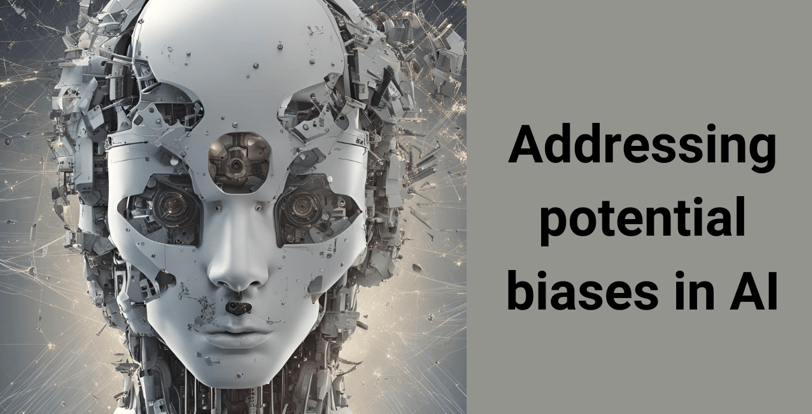Addressing potential biases in AI


The most crucial action to ensure the fairness and equity of AI applications is dealing with potential biases within AI algorithms. First of all, any bias can only be addressed when it is accepted that bias indeed exists and is sourced from many places: either the data feeding the training algorithms, the designs of the algorithms themselves, or the interpretation of their outputs. These biases can be fought with the use of different and representative data sets in training. In such a manner, the AI system does not favor any group over others and can hence serve all its intended demographics without bias.
Regular bias auditing will be another strategy. Testing and reviewing AI systems regularly for such biases will have helped spot and mitigate the problems early. It has to be very transparent and has to be done in concert with various stakeholders so the definitions of bias and fairness cover everything.
Besides the technical measures, governance and controls must be put in place. To this end, ethical standards and guidelines for developing and using AI should be defined, ideally based on a broad spectrum of societal values and norms. Also, teams contributing to AI development could pool all these viewpoints and experiences in the same table to further minimize the risk of implicit biases being encoded into AI systems.
Continuous monitoring post-deployment has to find any biases which may not be seen during the testing process. These algorithms will always be subject to continuous improvements over time and will always ensure that they do not exhibit a biased nature within their engagement of real-world data and scenarios.
Education and awareness are a critical part in the process to eradicate AI bias. People working on designing, deploying, or utilizing AI should be educated on identifying bias, understanding the impact and methods of evasion. The exercise must be implemented from the producers up to end-users on observing biases and making complaints about possible disparities.
It must then be interdisciplinary. Hence, technologists, ethicists, sociologists, and other legal experts will collaborate with each other in the objective of developing and applying technical improvements and operational practices guided by ethical standards that ensure responsible development and deployment of AI. Intergenerational efforts can easily result in better solutions that reflect the complexity inherent in bias and fairness in AI.
Actually, by taking this comprehensive approach, we could build AI systems that are not only intelligent and efficient but also just and fair, carrying the diversity and inclusion of the society that they would serve. It's not an easy task, but it is well within reach should concerted effort and commitment be directed toward it. This means unleashing the strength of AI and guaranteeing that the benefit is obtained in favor of all and not against people due to the basis of discriminatory or prejudgment. This represents a technical as well as ethical requirement in correlation with the proper principles of functions for equality as well as fairness in the intelligent artificial age.
References
https://www.ibm.com/blog/shedding-light-on-ai-bias-with-real-world-examples/
Broussard, Meredith. "Artificial unintelligence." (2019).
Ferrara, Emilio. "Fairness and bias in artificial intelligence: A brief survey of sources, impacts, and mitigation strategies." Sci 6, no. 1 (2023): 3.
